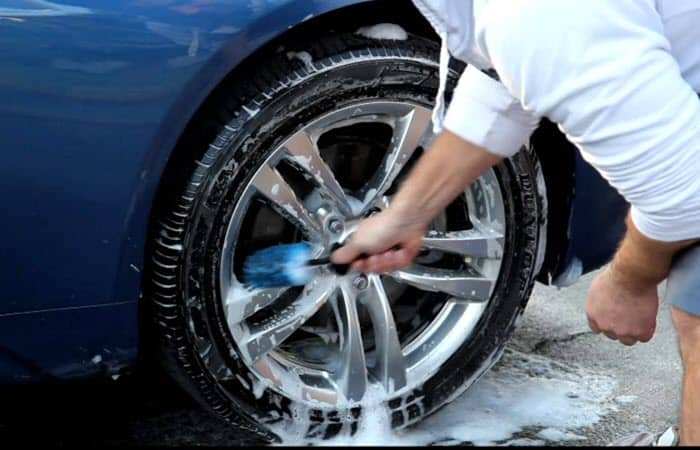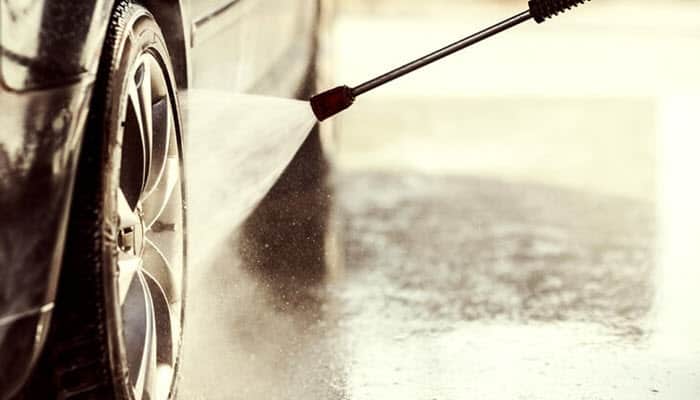Of all the parts of your car, the wheels are perhaps the toughest ones to clean. Since they’re the ones that touch the road the most, they also get exposed to different kinds of pollutants.
These include mud, dirt, and grease.
Going for a carwash is the fastest way to get this problem fixed. But, we know how expensive it costs and spending that much money every now and then isn’t practical.
However, what if you can clean your wheels with just a fraction of the price? Here’s how to clean tires with household products that are as good as going to a shop.
Why Your Tires Turn Brown
Your tires turn brown mostly because of antiozonant.
Antiozonant is a chemical added to the rubber to prevent your tires from drying (oxidation.) Tire browning is also known as blooming, which can be prevented by always cleaning your tires.
Blooming happens as antiozonant is slowly pushed to the outer edge of the rubber casing. Once it makes contact with oxygen, a brown residue is then left on the tire’s surface.
Antiozonant is an organic chemical. It makes tires last longer by slowing down their deterioration because of oxidation.
That’s why it’s possible to make tires that can last for 10 years!
To help get this benefit, the rubber casing is made in a way that the chemical moves forward on your tire’s surface. This makes the tires stay UV/oxygen-resistant and flexible for longer.
Myths on What Causes Tire Blooming
Mold releases are basically non-stick lubricants. They are put into tire molds so the tires can be easily released.
Those used when manufacturing tires don’t make them turn brown. But, they still contribute to the risk because they make the antiozonant remain on your tire’s surface.
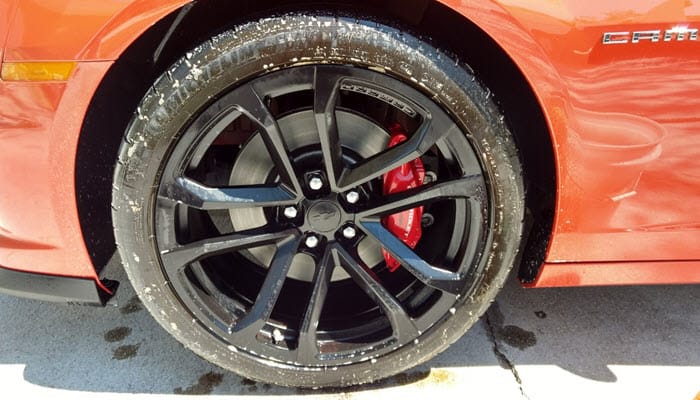
And as mentioned, the more antiozonant is left at the edges, the more oxidation and browning will occur.
Some also believe that silicone makes tires bloom. However, this isn’t true because it is sticky—this allows dust and dirt to stick to the tire’s surface and make the sidewalls go brown.
This makes the tire get dirty, but not bloom.
When it happens, simply use a brush and some water to clean the tire. Meanwhile, special silicone-based dressings and some scrubbing will also work.
How to Deal with Tire Blooming
Cleaning your tires regularly is one step to prevent tire blooming. Use this guide on how to clean tires with household products:
- First of all, make sure your car isn’t running. Turn it off and check if the rims are cool enough to be touched.
- With a garden hose, hose down big pieces of dirt and grit on your rims and wheels. It will help a lot with scrubbing and is easier than just using a pail and a bucket.

- Fill a bucket with a gallon of hot water and add a teaspoon of concentrated dishwashing liquid. Apply the solution and leave it for a few minutes for it to bond.
- Clean the outside edge of the rim using a sponge or a rag. Scrub it well until the metal surface becomes free from grease.
- However, avoid scrubbing too much since it can scratch the tire. Also, avoid brushes with teeth made of steel as they may pierce the rubber and lead to air leaks.
- Continue with the inner surface of the rim. You may want to use an old toothbrush for those hard-to-reach areas.
- Starting from the top, rinse the wheels with clean water. This is so all the soap is removed—any residue can leave a mark on whatever your wheels come in contact with.
- Again, using a garden hose will make it faster and easier. Repeat the steps if needed.
- Grab a clean towel and dry the wheels immediately.
The second step in protecting your tires is by using a tire dressing. It’s the most popular type of protection to stop tires from getting brown.
They fill in the pores of your tire’s surface so they appear blacker or have a more intense color. They give a matte, satin, or glossy finish and applying at least 2 layers can make it last longer.
These can be solvent-based or water-based.
Solvent-based dressings usually have silicone and are a clear yet sticky liquid. They’re more concentrated and give your tires a glossy finish once applied.
However, they can also make the rubber deteriorate quickly because of the petroleum distillate solvents in them.
Meanwhile, water-based dressings are usually a mixture of synthetic polymers and natural oils. This is why they look like milky liquids and are usually the most economical type of dressing.
They’re environmentally-friendly, too, and don’t cause rubber to degrade over time.
Tire Dressings Pros and Cons
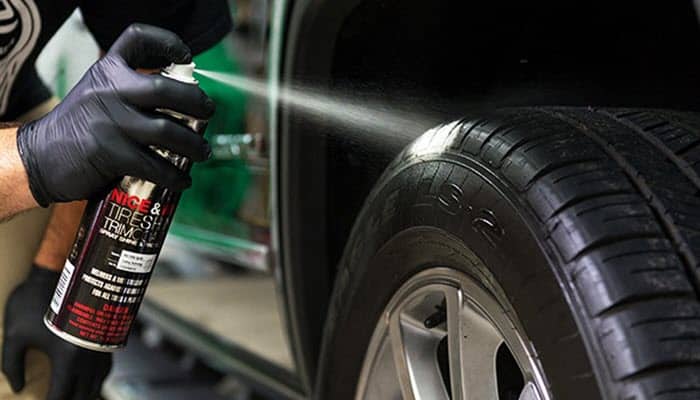
Pros:
- They help prevent cracking, oxidation, and fading. This makes them one of the best solutions to stop sidewalls from turning brown.
- They make rubbers last longer by lubricating them. This is why they’re also called rejuvenators.
- Water-based dressings don’t harm the environment since they’re biodegradable.
- Most of them come in spray bottles so they’re easy to apply.
Cons:
- Solvent-based dressings may seep into your car’s body. The petroleum distillate solvents in them can ruin the paint.
- Though convenient, sprays can be hard to control so they may damage the rims and the breaks.
- Since the coats can cause damage, they can promote cracking in the long run.
- You’re now ready to hit the road with clean tires!
Tire Cleaning Tips
Always clean the rims and tires first
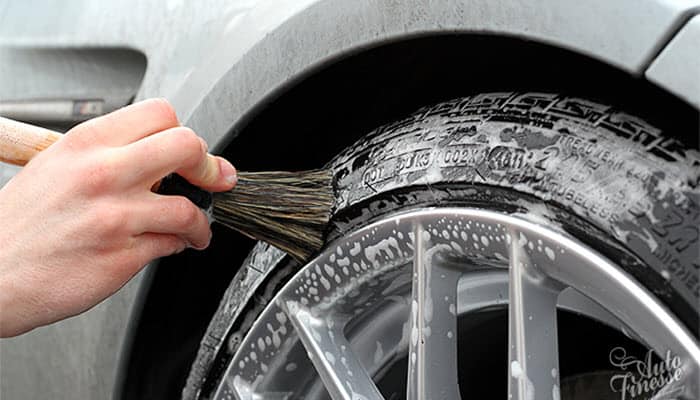
This is a must when washing your vehicle. They’re often the dirtiest part of your car so cleaning them first is the best thing you can do.
Have two different water buckets
Make sure your tires have their own bucket if you’re not using a garden hose. Also, use different sponges or if you only have one, rinse it well before you use it for your car.
This is to avoid scratching the car paint with the dust and debris from the tire. Furthermore, the things you use for your car can be too dirty for the wheels which can then make them brown.
Summary
Cleaning and protecting your tires can help prevent blooming and make them last longer. So, make sure to clean and protect them regularly to get the most out of their performance.

